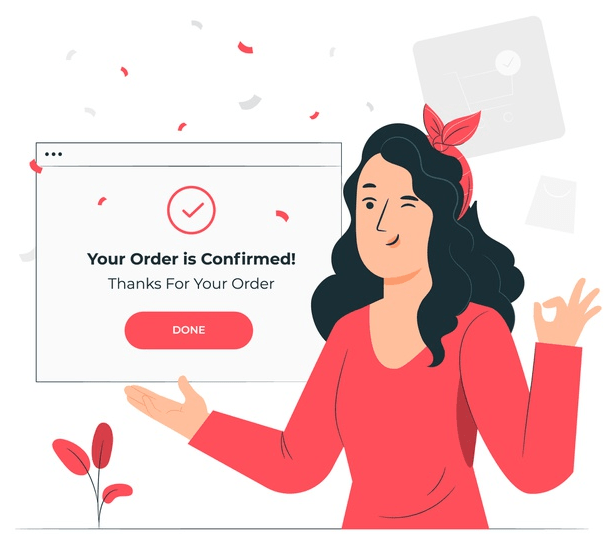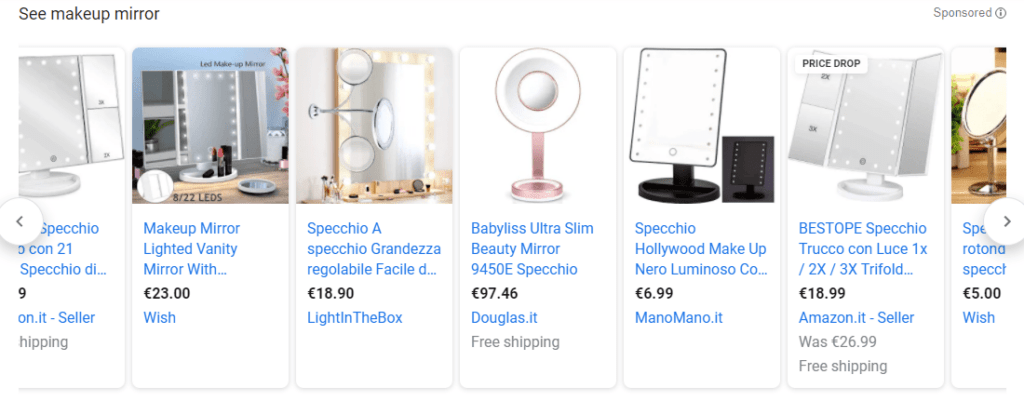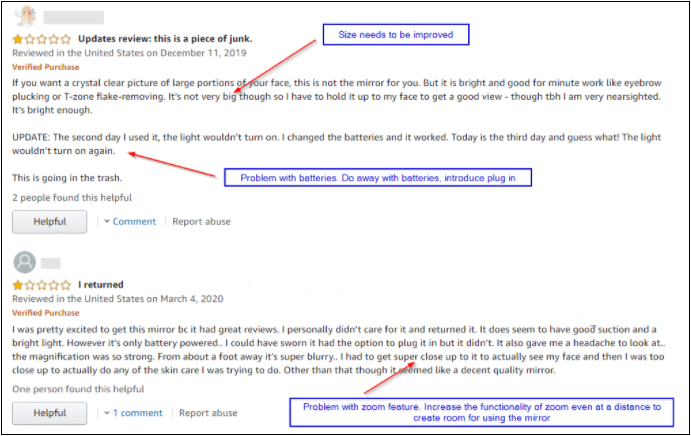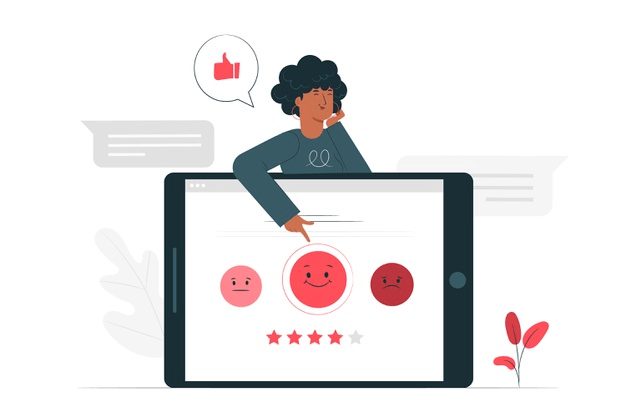Is this a question you don’t think about much because you’re just getting established? You should! The truth is that it’s possible to compete with successful ecommerce businesses. You can do some things the way they do them and some that are unique to you. Those can give you the slight edge to get into their market, create an online presence, and capture an audience that will relate to—and want to be associated with—your company and brand.

Building Your Idea into a Business

What’s your mindset?
We all see things and think about them from unique perspectives, and we implement our ideas in different ways too. But sometimes, when comparing ourselves to others who are very successful, we’re intimidated by the success of their businesses.
Instead, we should have the mindset of an entrepreneur. We should be motivated by their success to look at what they do, pick up some of their good habits, and learn the do’s and don’ts of ecommerce from them. With the mindset of an entrepreneur, you can look at problems and find solutions, seeing those problems as opportunities that can be turned into a business.
How do you get your idea?
To come up with a business or niche, you need to look at your passion and your potential.
There are many ways to come up with a successful business idea, perhaps a product that you’d like to sell. For instance, if you are passionate about the beauty industry and love things to do with makeup or related accessories, you need to find that one product that you can introduce to the market that people will love.
If there’s a service that you want to offer, look at what methods other companies that offer the same service use and find a way to package or offer it that is unique. For example, you could offer a new user interface after modeling a more intuitive way for users to interact with the system. For example, suppose you are creating a delivery app and the current apps only deliver food from one store. To venture into this market, you might consider giving users an option of buying food from two restaurants and having both delivered at the same time in the same delivery. In that way, you’re adding some extras that complement one another and building yourself a million-dollar idea.
How do you build on that idea?
Staying with the makeup and accessory example above, let’s say you want to venture into selling the small mirrors that people use to get a close-up view of their face such as when applying makeup, grooming eyebrows, or shaving. Here’s the next step:
- Check similar products available in the market: Look at what is available in the market to see if what you want to offer is already available. What could you do differently to make yours the option customers looking to buy such a type of product will prefer.

- Look at the product reviews: Once you’ve identified a couple of strong designs (based on large numbers of sales and/or a good ranking number in their category on Amazon), check out their reviews. Find out what customers think about the products available in the market. Look at the negative reviews to find out what they feel should have been done differently to improve on their user experience. Keep notes as this will help you develop a unique product that caters to the needs of users.

- Ask potential customers for their opinions: Interview some of your friends. Ask them what features they’d want to have in a mirror. Would they like a colorful one? Would they like it to have a zoom effect? Getting answers to these and many more questions helps you identify what you need to concentrate on to come up with a good product that will grab the attention of the audience.

When you build on the idea well, you do yourself a huge favor because the product will “sell itself”—meaning that a good product doesn’t require as much effort on your part to tell people how good it is: the product and reviews will speak for you.
Building Your Brand

Names and slogans
When you are building your brand, you need to come up with a good name that relates to your product. When you use it to market your product, you want people to know what the product is all about right from the start.
You also need a strong logo that people identify you with and a slogan that gives more meaning to your brand name. A slogan can be the best way to grab people’s attention.
Established brands often have slogans or catch phrases that are easy to say and can be said in almost all contexts. A good example is Nike’s “Just do it.” How often do you find yourself using the words “Just do it” in different scenarios—a lot, right?
Here are a few more well-known brands and slogans:
- Apple: “Think Different”
- Verizon: “Can you hear me now?”
- Coca-Cola: “Open Happiness” and “Taste the Feeling”
- L’Oréal: “Because I’m Worth It”
- Burger King: “Have it your way”
- Capital One: “What’s in your wallet?”
- Disneyland: “The Happiest Place on Earth”
- Dunkin’ Donuts: “America Runs on Dunkin’”
Product and packaging design
Next, you need to come up with sketches of the product design and look for a supplier who can create a model for you of a new design with added functionalities. Explain your needs to the supplier so that you’re on the same page and the right track for your product.
Design your product packaging. Communicate clearly to your supplier about placement of your brand logo. With that out of the way, you’re ready to get started.
Marketing Your Product

Online presence
Nowadays, there are many platforms that you can use to market your brand. You can use the availability of social media markets such as Facebook and Instagram (two of the biggest platforms out there) for presence leveraging, that is, to boost your presence online.
You can also use influencers. Look for one with a good following who’s influential in your brand niche and come up with a way for them to endorse your brand by sharing and reviewing your products. Influencers have a way of speaking to their audiences, who are your potential customers. The involvement of an influencer can kickstart your customer acquisition rate.
Content
Create good content that you can use to reach your market. For example, tell a good story about your company to give people a reason to want to be associated with you. Use the story to help your customers understand what it means to you when they join you on this journey.
User Experience
Provide them with an amazing user experience with great images, content and easy to use navigation that reminds them of what it’s like to shop at your online store. Give them a reason to recommend you to their friends and family and to buy from you again.
As you grow, keep in mind that you still want to compete with the big established ecommerce brands. Make sure that you offer value to your customers (you may not have the funds to speed up the growing process, but you can still keep offering value to your customers!). Offer them stellar customer service too and handle their fulfillments with love and care. You can include a note with orders to remind your customers that you really appreciate them and that they’re the reason you are up and running. Remember that your customers are on this journey with you.
Provide your customers with incentives. It’s human nature to want to acquire something extra. When customers buy from you, you can offer them a discount for their next order or a discount for giving you feedback.
Getting Feedback

While on the journey to becoming a big brand, be sure to collect as much feedback from your customers as possible. Ask them what they think about your product and what you need to improve. Use their feedback to make changes and improve their experience when they’re shopping with you. Making changes that suit your customers’ needs shows them that you appreciate their feedback and are willing to configure shopping preferences that make them happy.
Using SEO for Organic Search and Traffic

One of the most underutilized methods for extending your reach is the use of content-based organic traffic. Use search terms and search-related keywords to generate content that—when indexed by Google—pushes you toward (or onto) one of the first pages of Google search results.
Find out what search terms potential customers use to search for products that are similar to yours. Look for related keywords that have a high search rate but are not being used by as many competitors, which helps improve your Google ranking.
Create a blog for your store and provide several keyword-optimized articles and videos that provide detailed information about how your product works and/or how best to use it. Once Google optimizes the content by using the keywords in these articles, users will be able to find your store by searching with those keywords.
In this way, potential customers land on your blog articles where you provide them with the information they’re looking for about a product that your store also happens to sell. They’ll be interested in buying from your store as you’ll already have provided them with information about how to use that product.
When utilized well, these practices can increase your organic search in search engines and also promote sales through organic traffic.
Conclusion
Dollar Shave Club is a good example of a small brand that got into a market dominated by big brands like Gillette but still managed to move their way up to become a well-known and established brand.
So know that the dream to grow from an underdog to a big brand is realizable. With the right mindset and good strategies in place, your ecommerce business can grow steadily, especially if you put in practice the information you’ve learned, follow up with good customer service, and dedicate yourself to achieving the goals you set.
Resources
Barker, S. (2020). How social media influencers can impact your customers’ purchase decisions. Social Media Today.
Mertes, A. (2020). The 10 best company slogans of all time. Quality Logo Products.
Nastor, J. (n.d.). Business hacks: 21 Simple mindset hacks for entrepreneurs. Hack the Entrepreneur.

